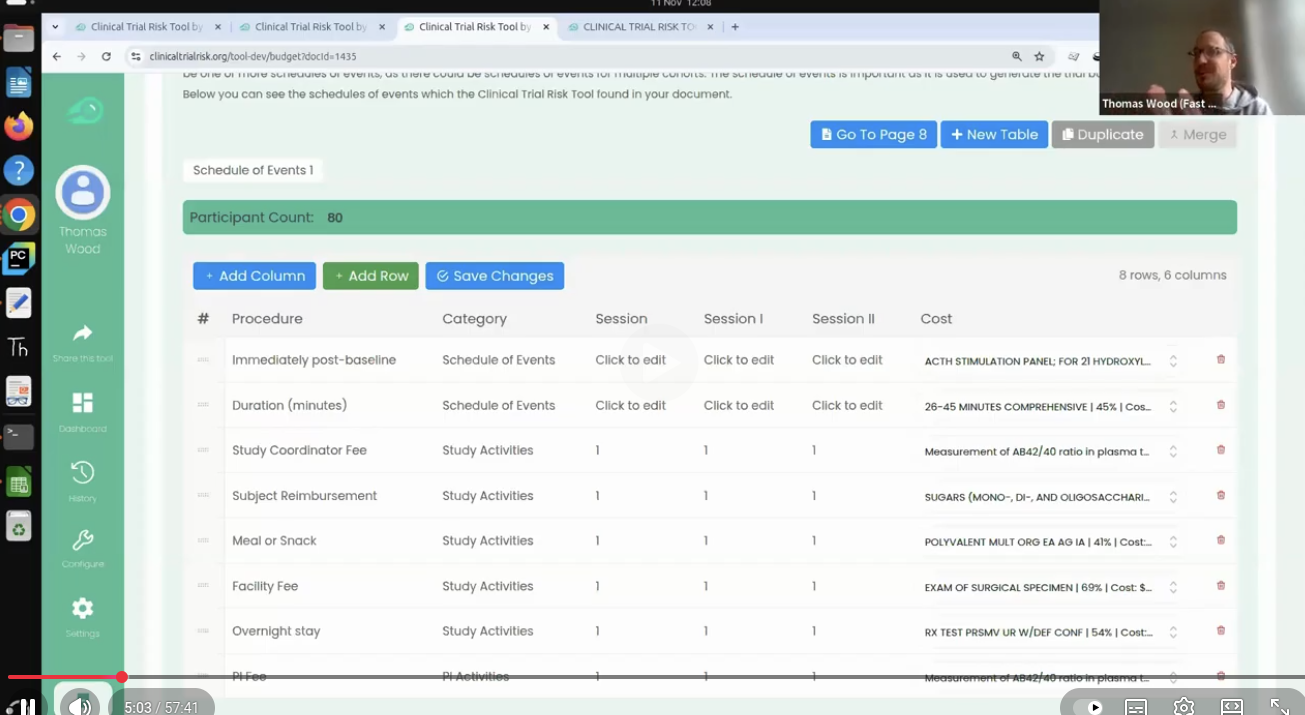
This post originally appeared on Fast Data Science’s blog on LinkedIn.
Clinical trial management requires precision, efficiency, and reliable tools. With many platforms available, each brings unique capabilities to the table. Let’s explore the comparisons between Fast Data Science’s Clinical Trial Risk Tool and other data tools used in clinical trials
Fast Data Science’s Clinical Trial Risk Tool focuses on risk and cost estimation through AI and Natural Language Processing (NLP). This software tool analyzes trial protocols to determine cost estimates and categorizes trial risks as high, medium, or low. The AI-driven approach allows for precision and speed, making it particularly useful for organizations anticipating financial and logistical challenges early in the trial planning process.
Strengths:
AI and NLP-driven precision in cost and risk estimation
Streamlined, lightweight tool ideal for integrating with other systems
Open-source, ensuring transparency and security
Limitations:
Focuses primarily on risk and cost estimation
More suitable for organizations focused on efficient budgeting and risk mitigation
Medidata’s platform is known for its robust CTMS solutions, integrating electronic data capture (EDC) tools, patient data tracking, and analytics. Medidata offers tools like decentralized trials, patient-centric solutions, and real-time analytics, allowing sponsors complete control over trial management.
Strengths:
All-in-one platform
Extensive integration capabilities
Real-time data analytics
Limitations:
It can be cost-prohibitive for smaller teams or niche trials
Complex onboarding process
SimpleTrials is a user-friendly CTMS platform designed for small—to mid-sized organizations. It focuses on trial planning, tracking, and management and offers study dashboards and document management features.
Strengths:
Affordable and scalable
Simple interface ideal for smaller teams
Quick setup and onboarding
Limitations:
Lacks some advanced analytics features
Limited capabilities for large-scale global trials
OpenClinica offers an open-source platform that provides flexibility and customization for clinical trials. It is widely used for EDC and clinical data management, making it an attractive option for teams that prefer to tailor their software to specific needs.
Strengths:
Open-source and customizable
Strong focus on EDC and data management
Suitable for academic and investigator-driven studies
Limitations:
Requires technical expertise for customizations
May not offer the extensive support available in commercial platforms
Oracle Health Sciences provides a comprehensive solution for clinical trials, focusing on AI and machine learning. Their suite of tools includes trial management, monitoring, data collection, and regulatory compliance.
Strengths:
Cutting-edge AI and machine learning capabilities
Scalable for global trials
Extensive integration with other Oracle products
Limitations:
High cost
Complex for smaller organizations to implement without significant resources
Each platform offers distinct advantages for clinical trials. Fast Data Science’s Clinical Trial Risk Tool stands out for its AI-powered risk and cost estimation and can be used on its own on your protocols, or you can incorporate the Clinical Trial Risk Tool into your broader corporate decision making process and financial planning. Whether you’re streamlining budgets, reducing trial risks, or evaluating a portfolio of investments in a biotech company, this tool helps you make more informed decisions from the start.
Try it for FREE today and experience precise cost and risk estimates in seconds. Contact us for more information or to schedule a DEMO and see how the Clinical Trial Risk Tool can optimize your trial planning!

Thomas Wood presents the Clinical Trial Risk Tool at the Clinical AI Interest Group at Alan Turing Institute The Clinical AI Interest group is a community of health professionals from a broad range of backgrounds with an interest in Clinical AI, organised by the Alan Turing Institute. In the group’s November 2025 meeting, the talk was given by Dr Jeff Hogg, Programme Director, MSc AI Implementation (Healthcare), University of Birmingham and Clinical Innovation Officer in AI, University Hospitals Birmingham NHSFT, titled AI Readiness for Health and Care Provider Organisations.

Guest post by Safeer Khan, Lecturer at Department of Pharmaceutical Sciences, Government College University, Lahore, Pakistan Multi-Arm & Multi-Stage (MAMS) Clinical Trials Design Tips The design of clinical trials is increasingly challenged by the Rising Costs, limited availability of eligible patient populations, and the growing demand for timely therapeutic evaluation. Traditional parallel-group designs, which typically compare a single intervention to a control, are often insufficient to meet these pressures in terms of speed, efficiency, and resource utilization.

You can use the t-test when you want to compare the means (averages) of continuous data between two groups, such as blood pressure or maximum concentration of a drug in urine (Cmax). If you have data with a dichotomous outcome, you can use the Chi-Squared test instead - please try our Chi-Squared sample size calculator. The calculator below will calculate the minimum sample size for you. Your expected effect size d is the standardised effect size according to Cohen’s definition.